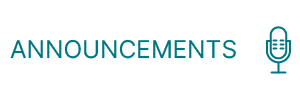
Kathy Mansfield
By Kathy Mansfield
Kathy.Mansfield@education.ky.gov
Effective school library programs are vital to student and school success according to more than 30 state studies that measured the impact of libraries and certified librarians on student achievement.
State law (KRS 158.791) requires all elementary schools in Kentucky to provide high-quality library media programs. But how do school boards, school councils, school or district administrators and school librarians know what is considered effective for a school library program?
The Kentucky Department of Education provides a rubric to assist schools and districts in determining the effectiveness of school library programs and in identifying areas for growth. The Library Media Program Rubric is one of five components in Beyond Proficiency @your library, a set of guidelines for quality library media programs in the state.
 Beyond Proficiency @ your library was introduced to districts, schools and librarians in 2010 as a revision to previous state guidelines for library media programs. It includes an Introduction to Beyond Proficiency @ your library, the Library Media Specialist Framework for OPGES, the Library Media Program Rubric, Characteristics of Highly Effective Teaching and Learning in the Library and K-12 library media student standards. The 2010 version of KDE’s guidelines moved from a print-only resource to an interactive Web tool that offers links to supporting resources and information, which can be updated on a regular basis.
Beyond Proficiency @ your library was introduced to districts, schools and librarians in 2010 as a revision to previous state guidelines for library media programs. It includes an Introduction to Beyond Proficiency @ your library, the Library Media Specialist Framework for OPGES, the Library Media Program Rubric, Characteristics of Highly Effective Teaching and Learning in the Library and K-12 library media student standards. The 2010 version of KDE’s guidelines moved from a print-only resource to an interactive Web tool that offers links to supporting resources and information, which can be updated on a regular basis.
The American Association of School Librarians (AASL) provides the following guidance on how to judge if your school has an effective library program in a 2016 position statement:
As a fundamental component of college, career and community readiness, the effective school library program:
- is adequately staffed, including a state-certified school librarian who
- is an instructional leader and teacher,
- supports the development of digital learning, participatory learning, inquiry learning, technology literacies, and information literacy, and
- supports, supplements and elevates the literacy experience through guidance and motivational reading initiatives;
- has up-to-date digital and print materials and technology, including curation of openly licensed educational resources; and
- provides regular professional development and collaboration between classroom teachers and school librarians.
Kentucky guidelines for effective library programs align with the national guidance, but provide more specifics related to staffing, budgeting and scheduling in order to provide students and teachers access to quality resources and services. According to Kentucky Department of Education recommendations in the Library Media Program Rubric, the following staffing is the goal for schools in Kentucky:
- Under 200 students: 1 full-time school media librarian (SML)
- 200-500 students: 1 full-time SML; .5 clerk
- 501-800 students: 1 full-time SML; 1 clerk
- 801-1,200 students: 1 full-time SML; 1.5 clerk
- 1,201-1,600 students: 1.5 SML; 1.5 clerks
- 1,601-2,000 students: 2 full-time SML; 2 clerks
- 2,001 and up students: 2.5 SML; 2 clerks
In addition to appropriate staffing, a library budget of at least $15 per student is recommended so that students and teachers have access to quality materials. An open (or flexible) library schedule is also a major component of the guidelines. That type of schedule allows for maximum flexibility of access to the space, resources and certified librarian and helps to ensure all students and teachers have the opportunity to find support, collaboration and instructional tools for optimal learning potential.
An open or flexible library schedule means students and teachers are be able to go to the library throughout the day to use information sources, to read for pleasure and to meet and work with other students and teachers. A flexible schedule also provides opportunities for students and teachers to access the certified librarian for guidance in the inquiry process and for support in accessing print and digital resources for content reading and reading for pleasure.
Creativity areas, collaborative seating arrangements, innovation zones and makerspaces are all part of an effective school library. These areas are facilitated by the certified librarian who provides instruction for students and teachers in the use of up-to-date technologies and digital resources.
A wide variety of reading material, both fiction and nonfiction, print and digital is essential for a quality library program. Motivating students to be lifelong readers includes giving them access to current, relatable reading material in a wide assortment of topics and levels.
The library media program is an integral part of the school’s total education program. Success in life and work includes the use of higher-order thinking skills, collaboration, innovation, and information and media literacy. Adequate library media facilities, with appropriate resources and professional personnel, are key components to success in these areas, as well as to success in implementing content area standards.
Is your library program as effective as it can be? Using the tools provided by the Kentucky Department of Education can help you make your library the center of innovative learning in your building.




Leave A Comment